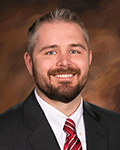Part 1 of 3
Physicians in Wisconsin will soon be paying more for medical professional liability (MPL) insurance thanks to a cyclical “hardening” of the market.
Many younger physicians have never experienced a hard market because we have been in a “soft” market for an unprecedented length of time. The last time premiums increased was in 2001. And, prior to that, 1975 and 1986.
Here’s how it works. The insurance underwriting cycle is determined by the collective behavior of insurers. During a soft market, insurers are willing to provide coverage at or below cost, usually in an attempt to gain market share. But, at some point, insurers get nervous about low premiums failing to cover the payment of future claims.
Tom Baker, a University of Pennsylvania Law School professor, says understanding how insurers define cost is, “key to understanding the insurance under-writing cycle”. He goes on to say that when, “…insurers set their prices, most of the costs of the insurance coverage will be incurred only in the future. As a result, insurers constantly have to imagine the future to decide how to price their products today. This situation creates a remarkably high degree of uncertainty… This uncertainty about insurance costs is the fuel that drives the underwriting cycle.”
Insurers turn a profit by charging their clients premiums, investing those premiums and then paying out claims that are less than the income they make on premiums and investments.
Things are changing because 2018 was the third year in a row the industry’s combined ratio has exceed 100%. In other words, the industry would have been unprofitable each year since 2016 without investment income.
And, according to Don Tejeski, Senior Vice President at AmWINS Group Inc., no insurer is bucking the trend: “Underwriting overall has gotten more disciplined. No one is undercutting the market.”
Despite publishing an article earlier this year that forecast a continued soft market, Susan J. Forray, a principal and consulting actuary at Milliman (one of the world’s largest providers of actuarial and related products and services), when contacted directly cautiously advised, “The closest proxy to a nationwide market would be the market for reinsurance. Most companies would say the reinsurance market has hardened. This was the case when we wrote our article but I think the hardening has broadened across the reinsurance market since then. I think this will continue to contribute to a hardening market in states where the soft market has not yet ended.”
Wisconsin is an insurance haven
Nationally, adverse litigation trends, increased frequency of severe claims, and years of poor market results are driving insurers to look at raising premiums for the first time since 2001. Several states have already seen significant premium hikes and higher deductibles along with a reduction in coverage. It’s a classic hard market scenario; physicians and employers of physicians are paying more for less.
And it gets worse. Some insurers are exiting the market all together.
Because of a number of factors, Wisconsin physicians have been shielded from this trend. But, in the last three months, we have seen that shield start to give way.
Thanks to the efforts of the Wisconsin Medical Society and the medical community in general, Wisconsin has always been among the top states when it comes to affordable MPL insurance. One of the most significant factors was the creation in 1975 of the Injured Patients & Families Compensation Fund. Physicians and other health care providers pay into the fund, which covers malpractice awards of greater than $1 million. Physicians must purchase their own MPL insurance to cover claims less than $1 million. Bottom line: A physician’s personal assets are never at risk in Wisconsin thanks to this fund.
In addition to being instrumental in the creation of the fund, the Wisconsin Medical Society has consistently and effectively lobbied the state legislature resulting in the capping of non-economic damages and other legislation beneficial to physicians.
What can you do about it?
Inevitably, you will pay more for MPL insurance. But, to avoid an even worse-case scenario, where you can no longer find adequate coverage at all, there are several things you can do.
As the market hardens, underwriters will begin to clamp down on exceptions. This means that if your risk management practices and policies are irregular, you will pay a lot more and your options could be severally limited.
Unfortunately, to protect their profits, insurers may reduce claims and risk management personnel and services. Which makes it even more important for physicians to make sure they have their act together when it comes to risk prevention.
This means you’re going to have to be more self-reliant when it comes to risk management because every claim will have an increasingly significant adverse effect on your premiums and even your ability to be insured at all. If you make risk management a top priority, you are much more likely to be been seen as a preferred customer by your insurer.
We will dig a little deeper into what you can do to better manage your risk and the help that you can expect from a dedicated and experienced insurance brokers in the third part of this article.
For now, assuming your house is in order, you will want to look for stability and security by renewing your coverage with a financially strong insurer; a long-term player committed to the MPL insurance marketplace. Here again, an experienced broker can play a key role in helping you understand the quality of the insurers willing to do business with you.
It is essential now more than ever to seek the help and advice of an experienced, committed adviser who can help you improve your underwriting profile if need be and navigate your options.
Shawna Bertalot, CIC, ACI, President WisMed Assure
shawna.bertalot@wismedassure.org
608.442.3738


